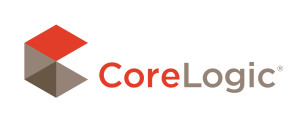This post is part of a series sponsored by CoreLogic.
Why doesn’t the carrier already have property data on this home?
Is this quote accurate or will I have to go back to the homeowner with a revision?
 Every agent wants to provide the best product for their customer, but questions like the ones above make it difficult to quote policies with multiple carriers. Often, timing is critical and the need for speed is essential to a consumer. For example, imagine a scenario where an agent receives a frantic phone call from a homeowner who is trying to close a mortgage loan, but forgot the need to provide proof of Homeowners Insurance coverage. This agent may choose to quote a policy with a single carrier knowing that it can take an average of 20 minutes to enter consumer-supplied property information at each carrier’s portal with no guarantee that the quotes will be based on a consistent and accurate reconstruction cost. Therefore, while bidding a homeowner’s policy with a single carrier may get the job done, a question remains; is this the best product for my client?
Every agent wants to provide the best product for their customer, but questions like the ones above make it difficult to quote policies with multiple carriers. Often, timing is critical and the need for speed is essential to a consumer. For example, imagine a scenario where an agent receives a frantic phone call from a homeowner who is trying to close a mortgage loan, but forgot the need to provide proof of Homeowners Insurance coverage. This agent may choose to quote a policy with a single carrier knowing that it can take an average of 20 minutes to enter consumer-supplied property information at each carrier’s portal with no guarantee that the quotes will be based on a consistent and accurate reconstruction cost. Therefore, while bidding a homeowner’s policy with a single carrier may get the job done, a question remains; is this the best product for my client?
Comparative rating vendors can help agents achieve the goal of recommending the best product by reducing the time it takes to bid multiple carriers and bind a homeowner’s policy. Unfortunately, timing is only half of the equation. The other half is accuracy.
Often a carrier will quote a policy based on limited pre-fill data or homeowner-supplied property information. The agent will choose the best product for the client and later have to withdraw the quote when the carrier discovers they were missing pertinent information the first time around. Imagine the frustration of all involved parties?
property information. The agent will choose the best product for the client and later have to withdraw the quote when the carrier discovers they were missing pertinent information the first time around. Imagine the frustration of all involved parties?
A quicker and more accurate scenario would be one-time entry of the customer’s new address by the agent into a comparative rating platform. A single valuation of the new home would be generated from integrated pre-fill property and building cost data then electronically delivered to multiple carriers. The agent is able to provide value to the customer by getting an accurate policy bound in a timely manner without having to ask multiple questions about the new property—information that the homeowner may be lacking.
While comprehensive and complete data solves the problem of accuracy and timeliness, it’s important to remember the stringent regulations surrounding the protection of non-public personal information (NPPI). It’s the agent’s responsibility to know the lineage of all non-public data and to protect it once it’s in their possession. Once public personal information (PPI) is combined—either knowingly or unknowingly—with non-public personal information, it can quickly all become Non-public Personal information.
Bottom line? When underwriting property insurance, carriers and third-party comparative rating vendors should continue to work together to enable consistent and accurate property valuations as well as a faster, more streamlined point-of-sale experience for the agent and the consumer.

Topics Carriers Agencies Property Homeowners
Was this article valuable?
Here are more articles you may enjoy.



 Workers Sue Disney, Say They Were Wrongly Induced to Move to Florida
Workers Sue Disney, Say They Were Wrongly Induced to Move to Florida  GEICO Tops Progressive With Higher J.D. Power Scores
GEICO Tops Progressive With Higher J.D. Power Scores  Zurich to Buy AIG’s Travel Insurance Business for $600 Million
Zurich to Buy AIG’s Travel Insurance Business for $600 Million  Coverage Needed: Hundreds of Thousands in SE Now in Flood Zones With New Maps
Coverage Needed: Hundreds of Thousands in SE Now in Flood Zones With New Maps 

